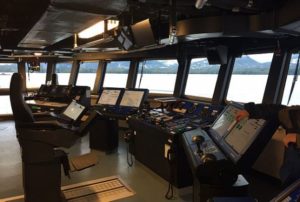 The International Maritime Organization (IMO) is moving closer to adopting a standardized system for electronic navigation, says the Baltic and International Maritime Council (Bimco).
The International Maritime Organization (IMO) is moving closer to adopting a standardized system for electronic navigation, says the Baltic and International Maritime Council (Bimco).
This after the IMO’s Navigation, Communication, Search and Rescue sub-committee (NCSR) forwarded three documents for adoption in June.
Since 2015, the group has worked on formulating and improving a set of guidelines to standardize the design of navigational-related data on bridge equipment, with the end user—the navigator—in focus.
This work is now complete and three important measures were agreed upon at the NCSR sub-committee meeting held late last month. All three documents have now been forwarded to the Marine Safety Committee (MSC) for adoption in June this year.
Once completed, all new radar, electronic chart display and information system (ECDIS), and integrated navigational displays (INS) from January 1, 2024 and all other displays on the bridge from July 1, 2025 will display information in a harmonized manner.
“This development is an important step which will bring great benefits to the seafarers. In the future, they will be able to easily familiarise themselves with the different bridge displays. In fact, the number of hours spent on familiarisation training can be reduced,” said Ashok Srinivasan, manager, maritime technology and regulation at Bimco and part of the sub-committee.
“Above all, this will greatly assist the navigator in making better decisions and greatly contribute towards improvement in safety of navigation,” Srinivasan says.
The first document up for adoption at the IMO’s MSC meeting in June covers guidelines for standardizing user interface design for navigation equipment. The formulated guidelines will apply to navigational equipment such as ECDIS, INS and radar equipment.
The second set is comprised of guidelines for presenting navigational-related symbols, terms and abbreviations. These guidelines have been completely revised.
The last consists of performance standards for presenting navigation-related information on ship-borne navigational displays. These standards have been amended.
An example of this new system (once the standardization is adopted) is when the user selects radar default settings, all radar equipment—irrespective of the make or model—will display exactly the same information.
Another example is that “True motion reset” can be performed by the touch of a single button on both ECDIS and radar, across all makes and models. The functionalities will be standard across all radars, ECDIS and INS on all ships, paving the way for smooth familiarization and operation of these systems.
Photo: NorthBySouthBaranof
